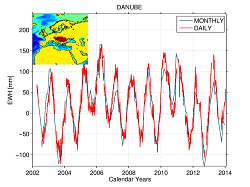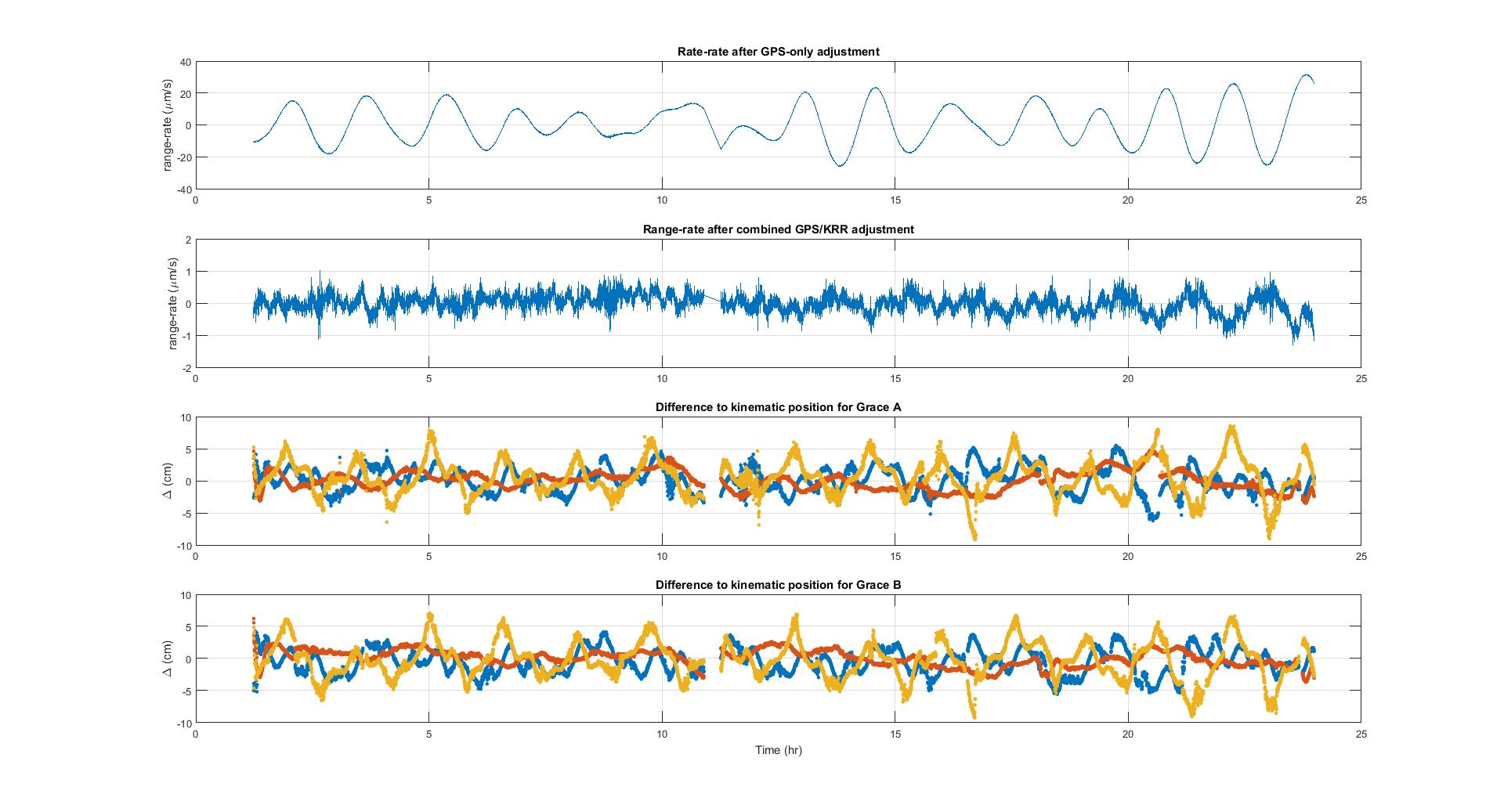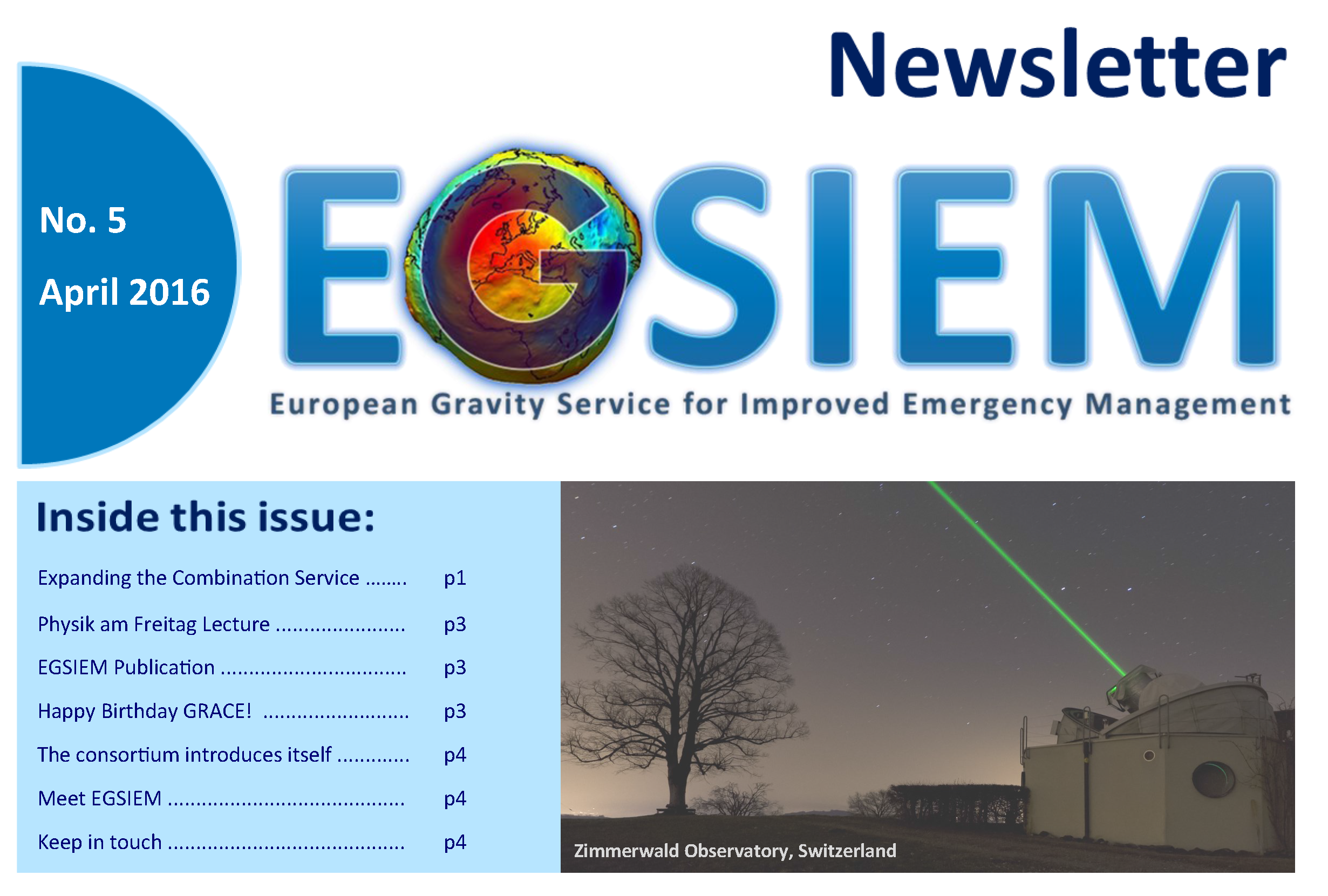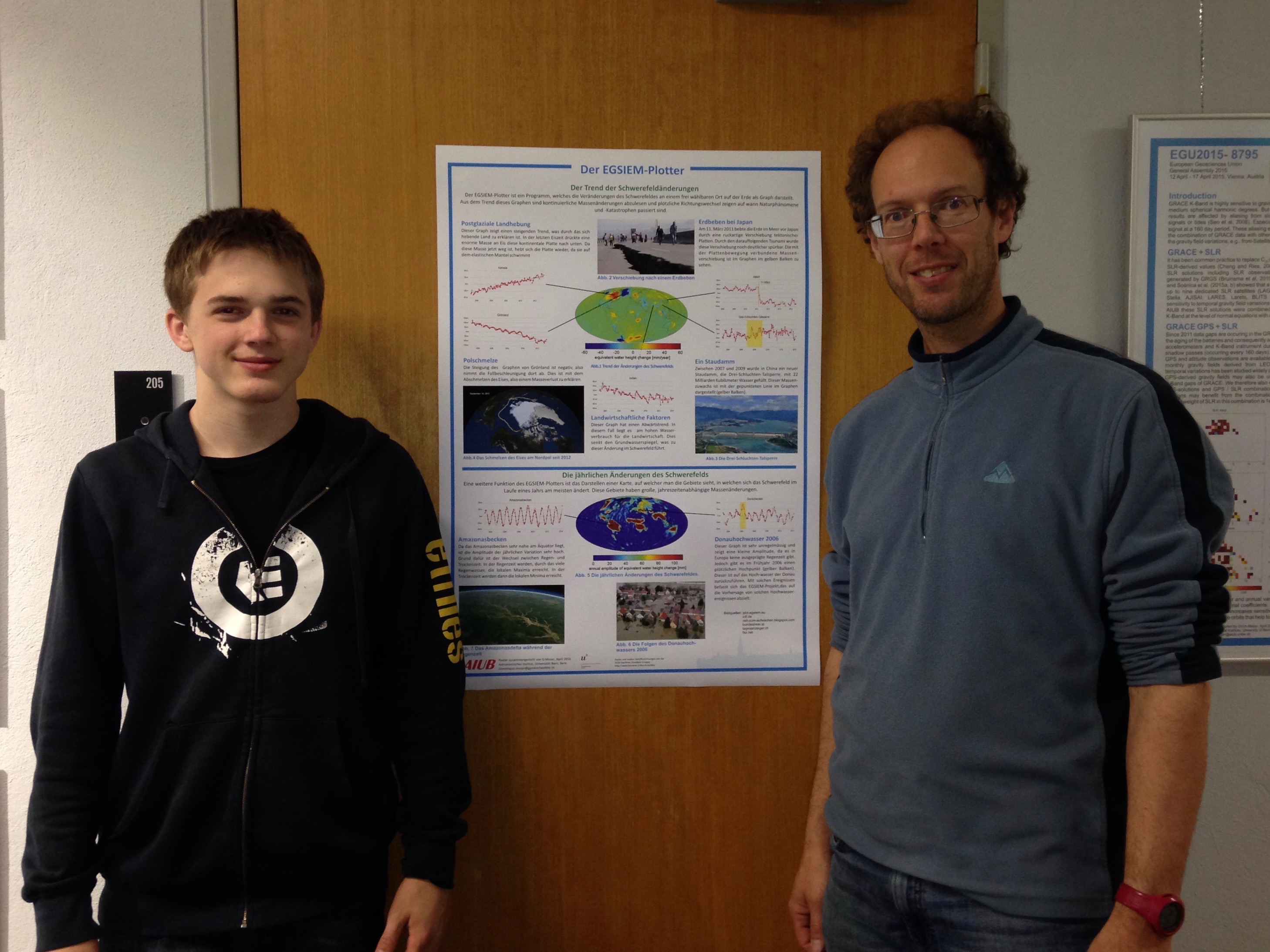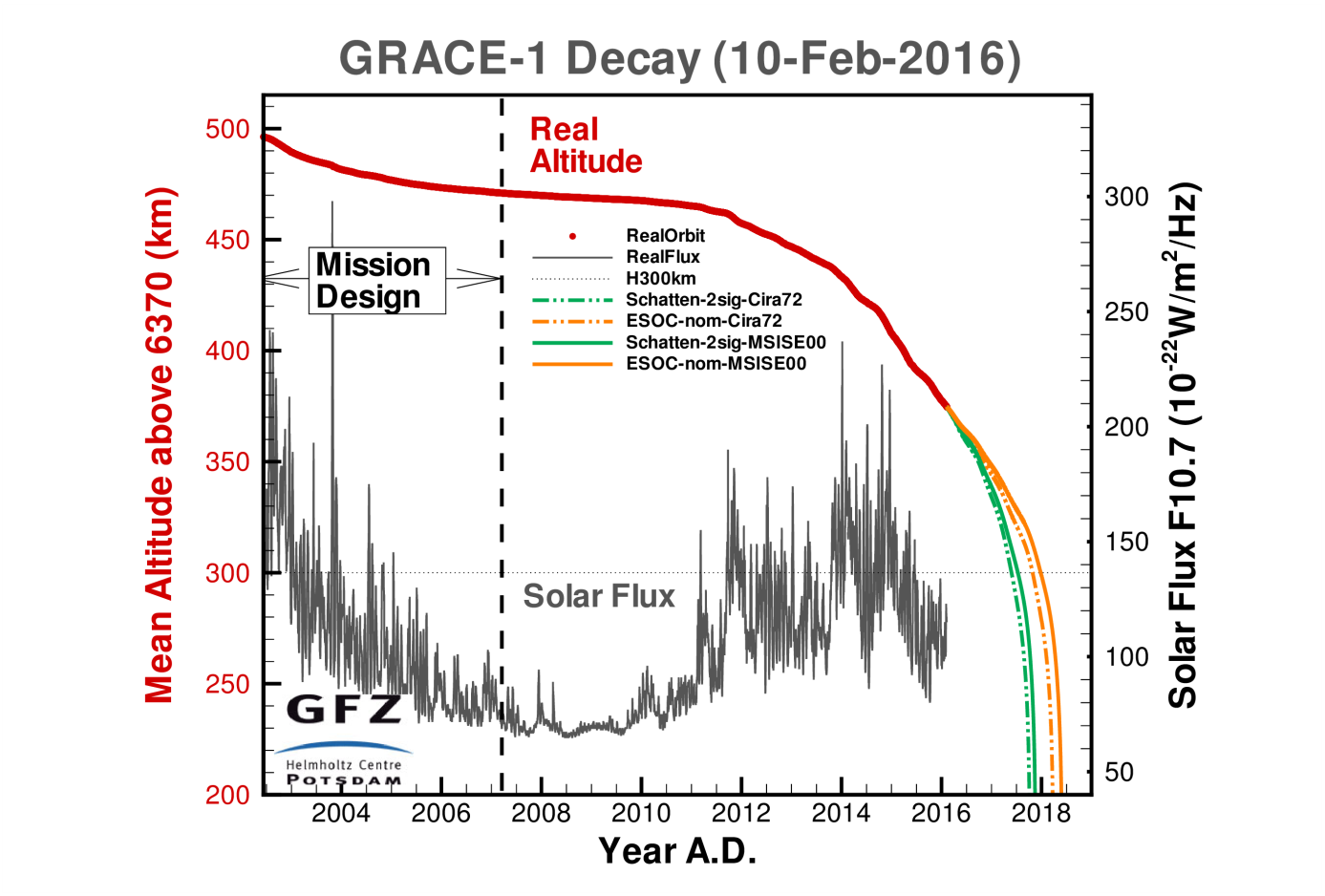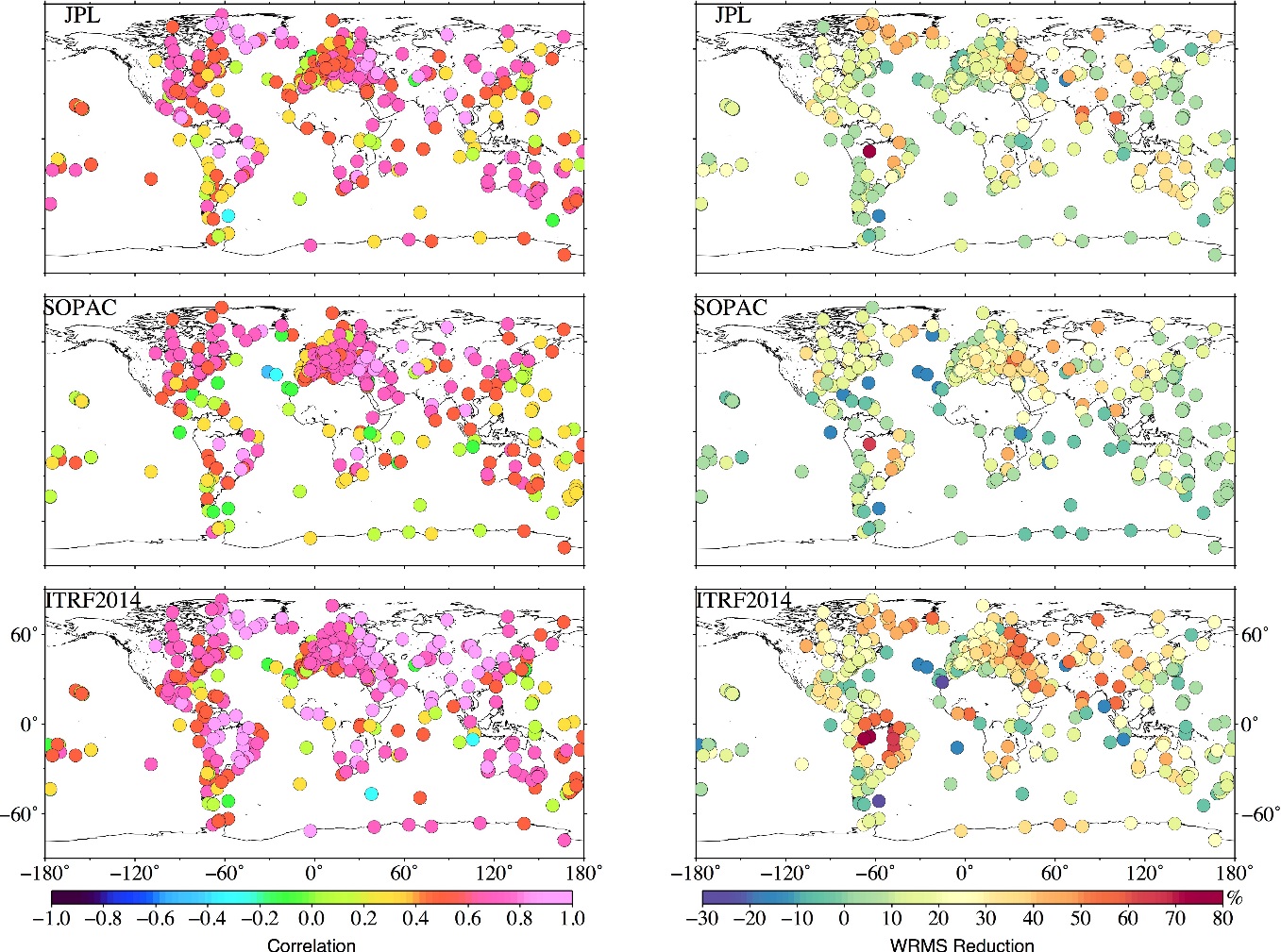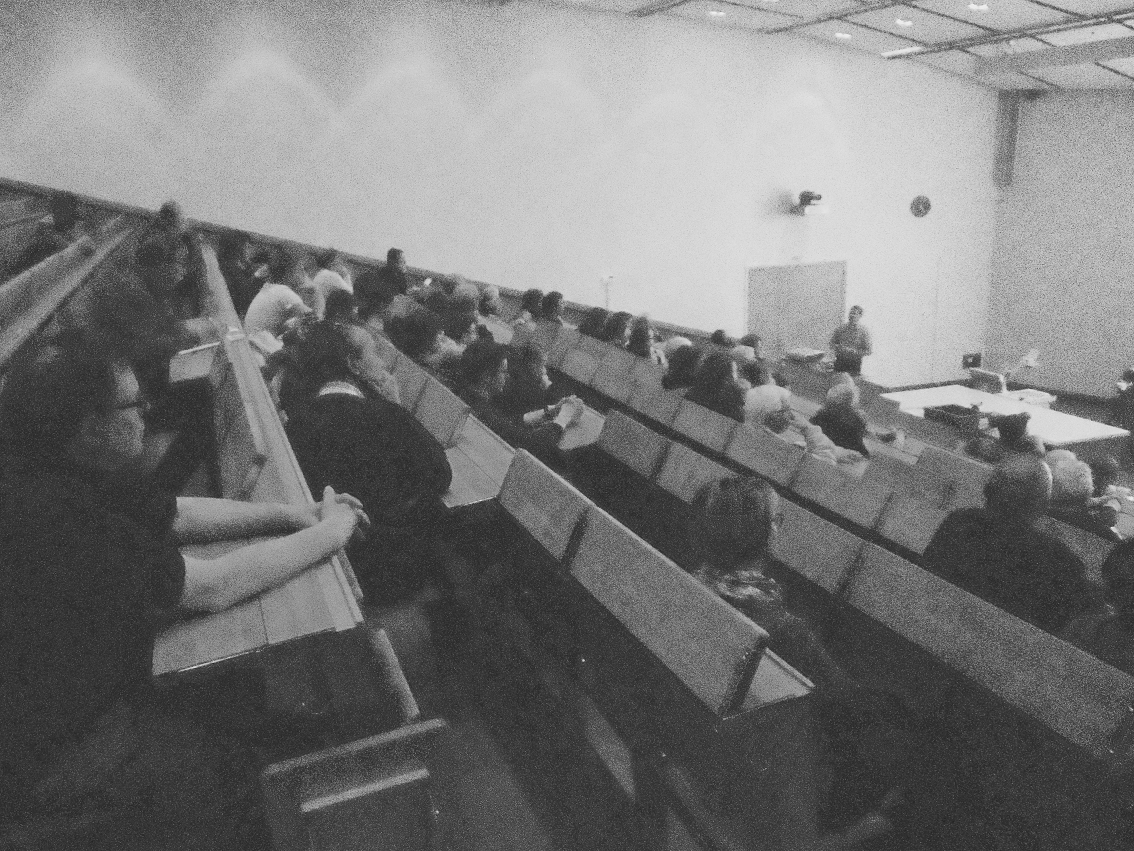GFZ Kalman-filtered daily GRACE gravity field solutions, computed on standard 2ºx2º equi-angular grids are now available for internal evaluation and verification. The grids are recursively predicted and consecutively updated by Poisson's integral over a set of radial basis functions in equi-areal surface tiles of available GRACE K-Band data and reduced dynamic GRACE orbits.

